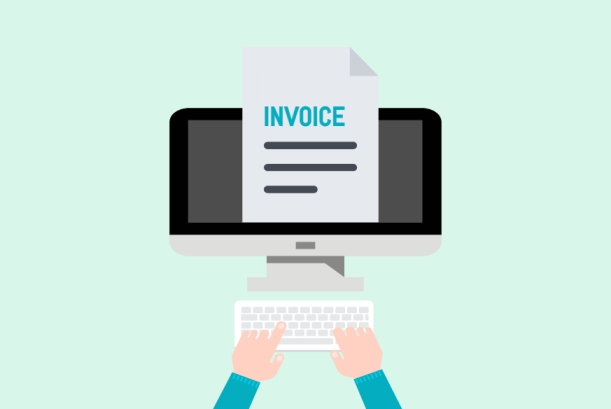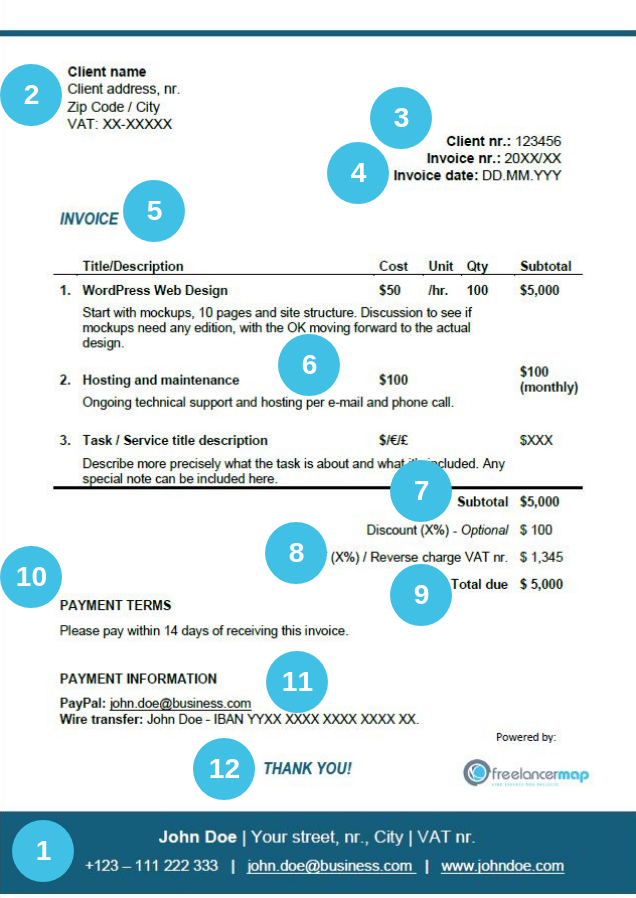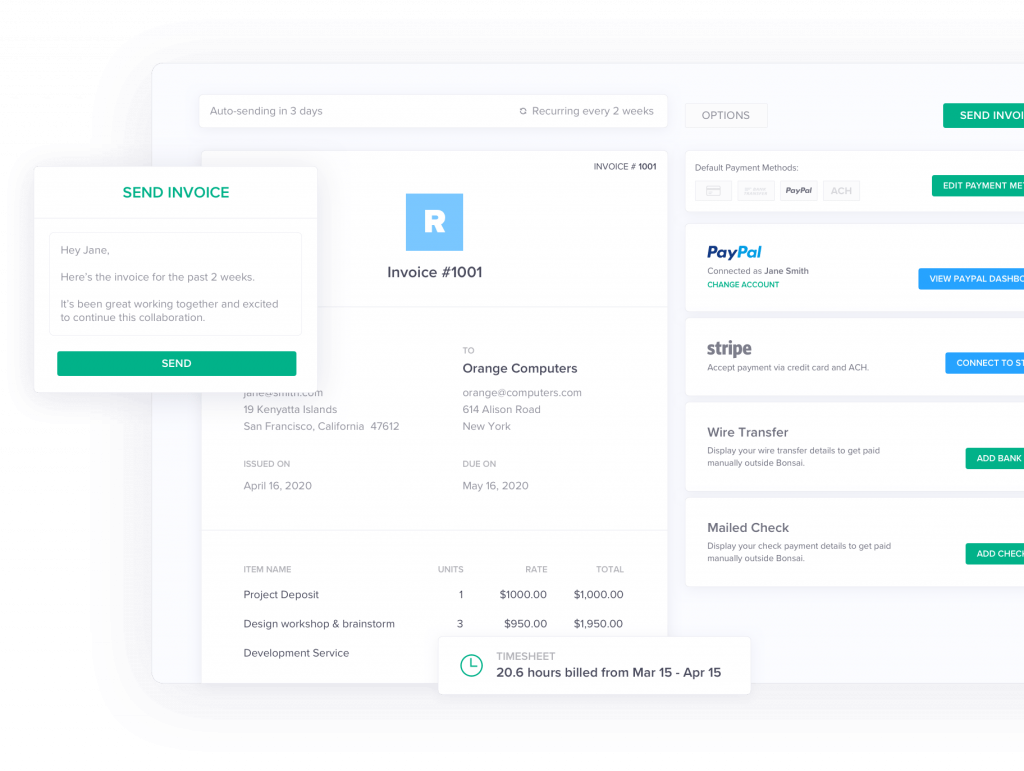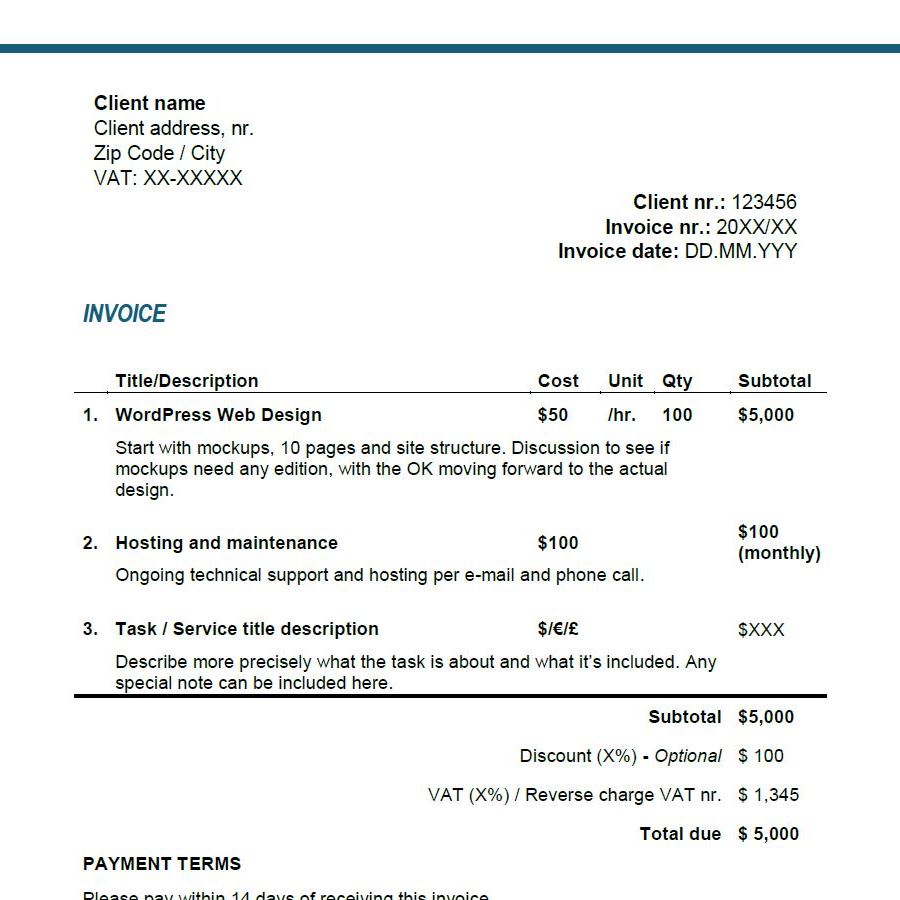Learning how to write an invoice is a crucial skill for freelancers to have. Not receiving the correct amount of payment or not receiving it on time is a problem many freelancers face. A good invoice is often the key to solving these problems.
- The most important elements of an invoice
- Information to be included in a freelance invoice
- General tips on how to write an invoice for freelancers
- Free invoice template for freelancers
The term invoice refers to any document in which an entrepreneur/professional informs their customer about the fee due on the basis of a purchase contract.
However, it is not mandatory that the document be explicitly referred to in business transactions as an “invoice.” The bill can also be called a receipt or a settlement.
Invoices must be issued either on paper or, if the recipient agrees, electronically. But in any case, in an invoice, deliveries or other services are billed to a customer.
It must therefore contain information about the delivered product, payment, seller and customer.


If you work as a freelancer, you will need to bill your customer for each order or project.
An invoice is not only a bill though – it can also be a statement about your professionalism and abilities, and can be used to highlight the fact that you know your business in detail.
This article will help provide you with some vital tips on writing an invoice, as well as a couple of great templates as examples.
The most important elements of an invoice
#1 Name and logo
To begin with, you’ll want to make sure you include your company name and logo (if you have one). This way a company will know exactly who you are by looking at your invoice.
#2 Contact details
Secondly, you will want to add your contact details – email, phone number and address, and everything the company will need to contact you in case there is a problem with the invoice.
You will also want the same details from your client. Make sure to send the invoice to the right person, especially if you are dealing with a big company. Invoices have a way of getting lost and addressing them to the person that will deal with your payment is a foolproof way to avoid that.
#3 Date and invoice number
Next off, make sure you include the date and invoice number. The invoice number is essential, as it will be helpful later on when both you and your client are organizing your paperwork. So make sure the number is unique and in accordance with your other invoices.
Join our IT freelancer community today! Create your freelance profile in just 2 minutes.
A good way to organize them is to number your invoices by year – for example, 201808 will be the eighth invoice for the year 2018.
Alternatively, you can also organize invoices by project names or by client numbers. The important thing is to pick a system and stick to it.
#4 Description
The next step in writing your freelance invoice is describing what you did and the amount due for that service. Be specific, since people don’t usually want to pay for something as vague as “design”. Tell the company exactly what you gave them and specify your freelance rates for it.
Make sure you note if the service is due to be paid by the hour or by the amount of work done. Once you have listed everything, make sure you add that up and include the total amount due.
#5 Deadline
Also, make sure that you include a deadline for your payment as well as your payment details.
Typically, you want to discuss the payment options with your client beforehand or include as many as you can – check, bank transfer or even PayPal.
Be aware of the transfer fees and make sure you include every detail the client needs to actually pay you.
Don’t forget your terms as well – what will happen if the client misses the deadline? Having it written out in black and white is a great way to make sure you get your money and/or interest if the payment is overdue.
Having late fees in your contract can make your client pay on time.
So, what information should be included in a freelance invoice?


Mandatory information to be included in a freelance invoice:
- Name and address of the invoicing party – that’s you
- Name and address of the invoice’s recipient – that’s your client
- Customer number and invoice number
- Date of invoice
- The word INVOICE as the title
- Description of the services/product delivered
- Total price before taxes
- Value added tax/discounts – if applicable
- Total amount due
- Specification of the payment terms
- Payment information
- Optional: A personal note
Start on a new project now
» Browse the latest IT Projects 🔍
Should I, as a freelancer, always send an invoice?
Short answer: YES
Long answer: Yes; since providing an invoice not only provides you protection, it also makes filing taxes and finding important financial information easier in the long run.
After you’ve been working as a freelancer for many years, being able to find an invoice by year and date is much easier than sorting through hundreds of disorganized emails that may or may not confirm payment.


Automate your invoicing, receive global payments & get paid an average of 13 days faster with Bonsai
General tips on how to write an invoice for freelancers
#1 Don’t be afraid to invoice people
Never be afraid to send invoices for your work. Sometimes friends may ask you to do something or you’ll be afraid to charge a specific amount, but remember, you deserve to get paid for your work.
#2 Send the invoice ASAP
You probably agreed that the final payment will be done at the conclusion of the project, so send the invoice as soon as you’ve completed the last task.
It takes clients a bit of time to process invoices, so the longer you take, the later you will receive your payment.
#3 Use a freelance invoice checklist
It’s an important document so you want to make sure it’s written in a professional way, is error-free and also has no grammatical errors.
#4 Keep the final delivery until the client pays
This wouldn’t work for all fields but if you were doing a logo design or designing a website you can withhold the final work until you receive your money.
#5 Be thankful
Thank the client for trusting you and working with you. If all goes well, this could be the start of a strong and long business relationship.
#6 Make the payment method easy
Ensure that the client can easily access your preferred payment method. If possible, send them a link and directions on how to complete it if it’s an alternative to the typical wire transfer.
We recommend you take a look at our partner Wise’s borderless account, as it allows freelancers to receive money with zero fees and at the real exchange rate when working with different currencies.
You could also invoice clients with tools such as Bonsai, which allow you to create and send invoices and make it easier for clients to pay. You can even add automatic late fees and use any of their invoice templates.
#7 Do not forget taxes
Depending on where the client is you will need to charge them VAT. Make sure you get this from the client, otherwise you will have to pay it out of your own pocket.
Free Invoice Template for freelancers
If you don’t have the time or desire to create your own invoice, we have the perfect template for you. You can download it and personalize it as you need and it’s available in various formats.
Freelance Invoice Template in Word, PDF and PTT
More freelance templates available: Proposals Order confirmation Payment reminders
There are some great templates over at Google Docs that you can also use for free, amongst these samples you can find an invoice template that you can edit here.
Remember that an invoice is not only about being clear about what you did and expect in return but keeping a professional image as well.
Now that you have your freelance invoice template, go ahead and find new clients on our job board!
*NOTE: The staff here at freelancermap are in no way claiming to be specialists on taxes or financials, nor do we claim that this is the penultimate source of advice concerning invoicing. If you ever have questions, be sure to reach out to a proper professional to obtain the most current and accurate information.*

